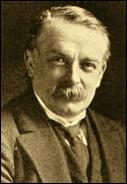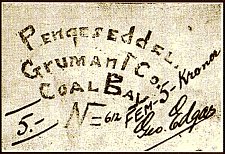|
||||
|
||||
 USSR Chairman: Vladimir I. Lenin 8.11.1917 - 21.1.1924 |
 UK PM: David L. George 7.12.1916 - 23.10.1922 |
|
||||
|
||||
|
||||
 NP.GC1 5 Kroner 1920/21 |
||||
|
We gratefully acknowledge
the late numismatist Walt Jellum
There is no harbor at Grumant so they used Colesbukta to
barge coal out to ships. Colesbukta is an open bay on the south side of
Isfjord, named after Coles Park. Arctic Coal Co. and others
misnamed it Coal Bay. No coal seams reach the surface at Colesbukta.
This is also a recognized coal bearing claim, west of Grumant, the
property of the estate of M. Lewin of Oslo. The original claim was made
in 1912 by the Norwegian company A/S Stavanger Spitsbergen. The
claim of the company also covered the Barentsburg area in Grønfjord. Grumant A. G. Agafeloff & Co. (1913-1920).
In 1913 a British com The Anglo-Russian Grumant Co., Ltd. (1920-1923).
Succeeded the Grumant A. G. Agafeloff & Co. Also known as
Grumant Co., Coal Bay (Coles Bay mis-translated and referred to as
Coal Bay). Russki Grumant Ltd. (1923-1931). This company
took over in 1923, but closed down the mine in 1926. It was reopened in
1931 under a Soviet company. During the economically depressed years of
the late 20's, the Russians were keen on buying up land. They acquired
the Swedish fields at Pyramiden and bought back their former mines from
the British, finally securing the properties of the Dutch company at
Barentsburg, about four areas, 97.05 sq. mi. in all. Sojusljesprom - a Soviet company took over the
Grumant claims in 1931, but handed them over to the following in 1932. Trust Arktikugol The winter population of 1934/35 was 1,821 Russians at Grumant and Barentsburg. The population prior to World War II varied between 1,500 and 2,000 Russians on Svalbard. In December of 1950 there were 2,023 males, 582 females and a production of 186,000 tons. During the winter of 1951/52 the population was reported to be 1,106 at Grumant, 953 in Barentsburg, and 457 at Pyramiden. The population was 1,961 in the winter of 1952/53. Production in 1952 was 250,000 tons. After World War II Grumant was linked with Colesbukta by a newly built railway. As mentioned, experimental work was done at the fields on the north side of Isfjord, at Bohemanneset, in the early 1950's. |
![]()